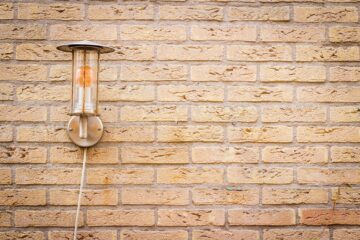Are you ready to tackle your next painting project? For many DIYers, the prospect of taking on a large-scale paint job can be thrilling and overwhelming – but the right tools can make all the difference. From drop cloths and tape measures to ladders and paint brushes, an array of products is designed to make paint projects easier. In this blog post, we’ll break down the essential tools every painter needs to take their DIY dreams from concept to completion—all confidently! Learn more about how investing in quality Paint supplies is a significant first step towards success in any home décor updating endeavour.
Paint Tray & Roller – Essential for applying paint smoothly and evenly
Working on a paint project requires tools, supplies, and a bit of know-how. A paint tray and roller are essential for applying the paint smoothly and evenly. From the tray’s flat surface to the rolling action of the roller, the tray & roller ensemble allows for efficient painting that looks professionally done. Why worry about messy strokes when you can have even coats with minimal time? Get your basic supplies and get started on your next paint job!
Masking Tape – Perfect for ensuring neat edges when painting walls or furniture
For any DIY painting project, masking tape is invaluable for perfect finishing. Whether you’re painting your house’s exterior trim or sprucing up your kitchen furniture, masking tape can help protect walls and surfaces from drips or splashes while ensuring a neat, professional-looking edge. The solid adhesive backing holds firmly even when applied in corners and curves, making it easy to achieve symmetrical lines that look crisp and sharp. Moreover, suitable masking tapes will remove without damaging surfaces or leaving behind residue, so your paint job looks as good on the outside as it does inside. So don’t be tempted to cut corners – let masking tape take the strain when it comes to your next painting project!
Brushes – Different brushes are required depending on the size and type of area you are painting
Painting can be laborious if you do not have the right tools for the job. Brushes are essential for any painter and craftsman, but different brushes are needed depending on the task. Smaller detailed tasks require a small precision brush, or a broad brush is best suited for larger areas like walls. Check what type of brush head is recommended – whether it be rounded, pointed or angled – as this can make all the difference in getting an even coat. Rightly used, brushes will help you achieve clean edges and professional-looking paint jobs that can impress anyone. Knowing which brushes to use on your next project will help save time and hassle in the long run.
Primer – Helps to prepare the surface and create a strong base for the paint
Primer is essential to starting any painting project, regardless of the material or size. Known for its adhesive properties, it helps create a uniform and even surface by filling in the slight imperfections before any topcoat is applied. Improving the integrity of porous surfaces such as wood or drywall creates a unified layer that helps ensure even coverage and superior adhesion. Furthermore, primer protects against scratches, dents, moisture, and other environmental variables that could affect the paint job and detract from the intended aesthetic. In short, it creates a strong base that guarantees excellent and long-lasting results with every painting project.
Drop Cloth – Used to protect floors and surfaces from spills or splatters
Drop cloths are essential for any project involving painting or staining. These heavy canvas fabrics protect floors and surfaces from unfortunate drips, splashes and messes during the painting process. Drop cloths are effective in shielding delicate surfaces from various liquids and providing a cushion when kneeling down or placing objects on the ground. Aside from its practical use for painting, a drop cloth can also be used to create decorative elements such as tablecloths, curtains, wall art, and even custom slips for furniture. With a little creativity, this versatile item can become more than just a floor covering!
Ladder or Stilts – Allows you to reach hard-to-reach places, making it easier to work on paintings with tall ceilings or high walls
If you’re an artist with a tall ceiling or high wall just begging to be painted with your masterpiece, you should consider investing in a ladder or stilts. With the help of these tools, you’ll be able to reach those hard-to-reach places and make your work much more manageable. Ladders usually come in multiple sizes and can offer the stability needed for working on larger projects. On the other hand, stilts are designed to give you extra height, so you still have a free range of motion for smaller projects like painting trim and shelving. Whichever tool you choose, both will allow you to do more intricate work and reach higher spots that would otherwise not be accessible.
Conclusion
In conclusion, these elements show that the key to a successful painting project is organization, preparation, and the right tools. Even with basic knowledge, you can get a professional-looking result by choosing the suitable paint tray, masking tape, brushes, primer, drop cloths and ladders or stilts. Considering this advice when undertaking any paint project will help ensure that you can achieve the best results possible with minimal effort. Furthermore, investing in suitable quality materials will not just save time in the long run, but they’ll also last longer, providing value for money. Lastly, if it’s your first time attempting a painting project, consider consulting a professional to hone your skills before tackling it independently.


